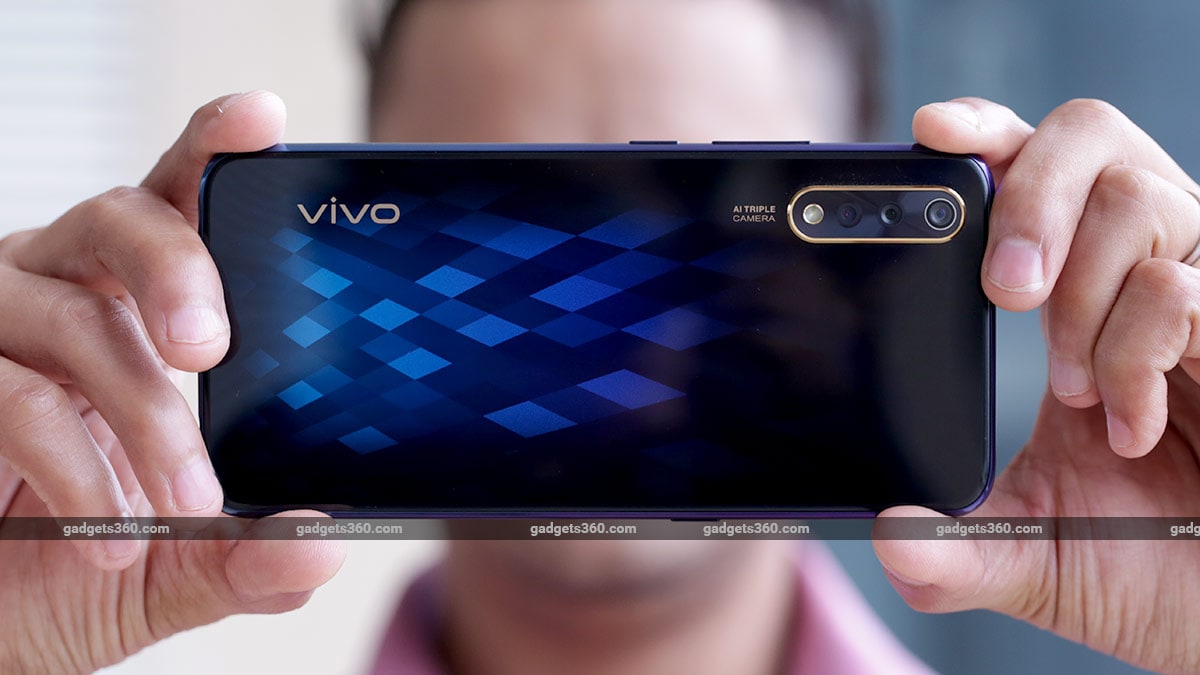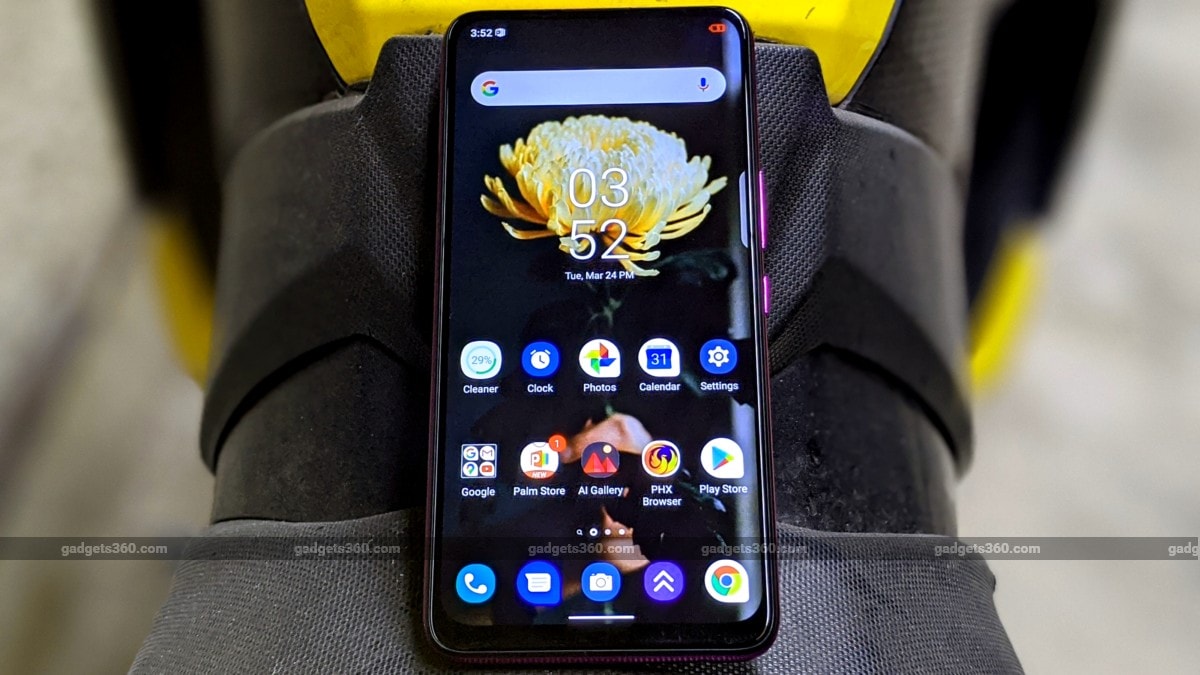Vivo recently launched the Vivo Z1 Pro (Review) in India and priced it quite well. This smartphone managed to fare quite well when we reviewed it. Now, the Chinese manufacturer has launched one more smartphone priced only a little higher, dubbed the Vivo S1. This is a part of the new S series which stands for Style. The Vivo S1 is stylish for sure, but does it have the performance to back its looks? We test it to find out.
Vivo S1 design
Vivo smartphones are usually sleek and well designed, and this one is no exception. The Vivo S1 sports a 6.38-inch display with a tiny dewdrop-style notch at the top. Vivo has opted for an AMOLED panel, and the Vivo S1 sports an in-display fingerprint scanner. The display has thin bezels on the sides but the bottom chin is comparatively thicker.
The Vivo S1 is available in two colours, Diamond Black and Skyline Blue and we had the Diamond Black unit for this review. It has a laminate back with a striking diamond pattern design and a gradient colour finish. Depending on how the light hits the back panel, the diamond patterns emerge, which does look catchy.
However, we aren’t a huge fan of the material that the back panel of the Vivo S1 is made of, as it picks up scratches easily. We would have preferred Corning Gorilla Glass, as seen on the Redmi Note 7 Pro (Review). The Vivo S1 has a triple camera module which protrudes slightly but has a metal rim around it which should save it from getting scratched.
Vivo has opted for a plastic frame that is rounded which makes the smartphone comfortable to hold in the hand. The back does not meet the frame seamlessly, and you can feel rough edges when holding the phone. Vivo has positioned the power button to the right along with the volume buttons, and they are all easy to reach. The Vivo S1 also has a dedicated Google Assistant button just like the one on the Vivo Z1 Pro.
![]() The Vivo S1 sports a 6.38-inch AMOLED display
The Vivo S1 sports a 6.38-inch AMOLED display
We were disappointed with the use of a Micro-USB port on the Vivo S1, considering that most other smartphones at this price point have moved to USB Type-C. The Micro-USB port is positioned at the bottom along with the loudspeaker and the 3.5mm headphone jack, while the SIM tray is on the left side.
Vivo S1 specifications and software
The Vivo S1 is the first smartphone in India to be powered by the new MediaTek Helio P65 SoC. The Helio P65 is a mid-range processor based on a 12nm process. It has a pair of ARM Cortex-A75 cores clocked at 2GHz, and six Cortex-A55 cores clocked at 1.7GHz. For graphics, it has a Mali-G52 integrated GPU.
Vivo has launched three variants of the Vivo S1 in India: the entry-level one with 4GB of RAM and128GB of storage; another with 6GB of RAM but 64GB of storage; and the top-end one with 6GB of RAM and 128GB of storage. These variants are priced at Rs. 17,990, Rs. 18,990 and Rs. 19,990 respectively. We had the top variant in for review and it had close to 100GB of storage available out of the box. The pricing of the Vivo S1 pits it directly against powerful phones such as the Realme X (Review) and the Oppo K3 (Review).
The Vivo S1 is a dual-SIM device and has two Nano-SIM slots as well as a dedicated microSD card slot. Connectivity options on the Vivo S1 include Bluetooth 5, dual-band Wi-Fi, GPS, FM radio, dual 4G VoLTE, and the usual sensors. The Vivo S1 packs in a 4500mAh battery and you get an 18W fast charger in the box.
![]() The Vivo S1 has dual Nano SIM slots as well as a dedicated microSD card slot.
The Vivo S1 has dual Nano SIM slots as well as a dedicated microSD card slot.
The Vivo S1 runs Funtouch OS on top of Android 9 Pie, which is heavily customised. If you have used a Vivo smartphone in the past, it won’t take long for you to find your way around the device. You can read in detail about Funtouch OS in our Vivo Y17 review. For starters, there is no app drawer and all app icons are lined up on the home screens. Funtouch has an iOS-like Command Center which needs a swipe up from the bottom of the screen to access. This is the exact opposite action compared to other Android smartphones and could be annoying to some people.
Vivo does install a fair amount of bloatware on the device, and we saw DailyHunt, Helo, Facebook, Gaana, Amazon Shopping, PhonePe, Paytm, and a few other apps preinstalled. Thankfully, this phone did not have a notification spam issue like the Oppo A9 (Review) we recently reviewed. Vivo also has its own app store called the V-Appstore.
Vivo S1 performance, battery life, and cameras
The MediaTek Helio P65 SoC powering the Vivo S1 does a good job and you won’t notice lag or stutter doing day-to-day tasks. This smartphone is quick to launch apps and can run most apps and games out there on the Google Play Store. We never had to wait too long for an app to open. It also manages idle battery drain well, and in our experience, the Vivo S1 did not lose too much of its charge when sitting idle. Multitasking was quite easy considering we had the 6GB RAM variant of the device. The phone never really had to close apps running in the background.
The AMOLED panel on the Vivo S1 had good viewing angles and was bright enough to be legible outdoors. However, the bottom-firing speaker isn’t that loud, causing the Vivo S1 to fall short of being a good device to consume content on. We also tested the in-display fingerprint scanner as well as the face recognition feature on this device. The in-display scanner is quick to scan a finger and unlock the smartphone, and rarely required a second attempt. Face Unlock isn’t the most secure way of unlocking the smartphone, but it is very quick and convenient.
Vivo S1 managed to clock 146,142 in AnTuTu benchmark which wasn’t significantly higher than the 145,999 scored by the Oppo A9. The Vivo S1 managed 1,853 and 6,034 in Geekbench 4’s single-core and multi-core tests respectively. In graphics benchmarks, the smartphone scored 36fps in GFXBench T-Rex and 12fps in GFXBench Manhattan 3.1.
PUBG Mobile ran at the medium preset on the Vivo S1 with the graphics set to Balanced and the frame rate set to Medium. We played the game for 20 minutes which did cause the phone to get warm to the touch. We also noticed a 5 percent battery drop after gaming for that long.
![]() The S1 runs FunTouch OS on top of Android 9 Pie
The S1 runs FunTouch OS on top of Android 9 Pie
The Vivo S1 delivers good battery life and we could go on for about a day and a half on a single charge. During this cycle, we ran all our benchmarks, took a couple of camera samples, and had an active WhatsApp account on the device. In our HD video loop test, the smartphone managed to last for 16 hours and 38 minutes. We put the supplied charger to the test and it managed to charge the battery to 34 percent in 30 minutes and 65 percent in an hour.
Vivo has opted for a triple camera setup on the back of the Vivo S1. This consists of a 16-megapixel primary camera with an f/1.78 aperture, an 8-megapixel ultra-wide-angle camera with an f/2.2 aperture, and a 2-megapixel depth sensor with an f/2.4 aperture. At the front, this phone has a 32-megapixel selfie shooter with an f/2.0 aperture.
The camera app is similar to what we’ve seen on the Vivo Z1 Pro and has multiple modes to choose from. It has quick toggles for HDR, Live Photo, Filters, aperture mode, and a toggle to switch between the regular and the wide-angle lens. Apart from the photo and video modes it offers Pano, AR Stickers, Fun Video, Document, and a Pro mode. Fun Video adds background audio while you record a video.
Photos taken with the Vivo S1 were below average for a smartphone at this price point. In daylight, the phone focused quickly but we noticed that photos were underexposed. Details were acceptable, and text at a distance was legible. The same scene was exposed better when using the ultra-wide-angle sensor. However, in this case, photos lost out on details.
![]()
![]()
![]()
![]() Tap to see full-sized Vivo S1 camera samples
Tap to see full-sized Vivo S1 camera samples
Close-ups were good, and the Vivo S1 could lock focus quickly and get the exposure right. However, the colours weren’t always accurate. Portrait mode offers different lighting effects which you can choose from before hitting the shutter button. The output had good edge detection.
Vivo also offers a separate aperture mode which can be used to take bokeh shots. While shooting portraits in this mode, we noticed that the blur effect wasn’t applied consistently. Edge detection wasn’t that good in this mode either.
The camera also has an AI Portrait Framing feature that helps you frame a scene properly. Once framed correctly, the Vivo S1 also takes the shot automatically.
Low-light camera performance was average, as the phone could not capture details very well. We did not find a night mode in the camera app, and this could have helped Vivo improve its low-light camera performance. Selfies had good detail but the Vivo S1 tends to overexpose scenes. You can take portraits in selfie mode as well, and the phone did manage good edge detection in our experience. However, these shots were also slightly overexposed.
Video recording maxes out at 1080p for both the primary as well as the selfie cameras. We found that the Vivo S1 lacked video stabilisation, which is a little surprising considering its price. Most smartphones at this price are capable of recording 4K video and can stabilise 1080p footage.
Verdict
The Vivo S1 is yet another smartphone from Vivo priced under Rs. 20,000. It has an eye-catching design and a quick in-display fingerprint scanner. Vivo does bring the new MediaTek Helio P65 SoC to the table, but it is only marginally better than the MediaTek Helio P70 SoC in a few benchmarks. In terms of processor power, the Vivo S1 is on par with smartphones powered by the Qualcomm Snapdragon 660, which can cost as little as Rs. 10,000.
While the Vivo S1 offers good battery life, its camera performance failed to impress us. For the asking price of Rs. 19,990 you can get better-equipped smartphones such as the Realme X (Review) or Oppo K3 (Review), or spend a little more for the Redmi K20 (Review).
Is Vivo S1 a better buy than the Redmi K20 and Realme X? We discussed this on Orbital, our weekly technology podcast, which you can subscribe to via Apple Podcasts or RSS, download the episode, or just hit the play button below.



